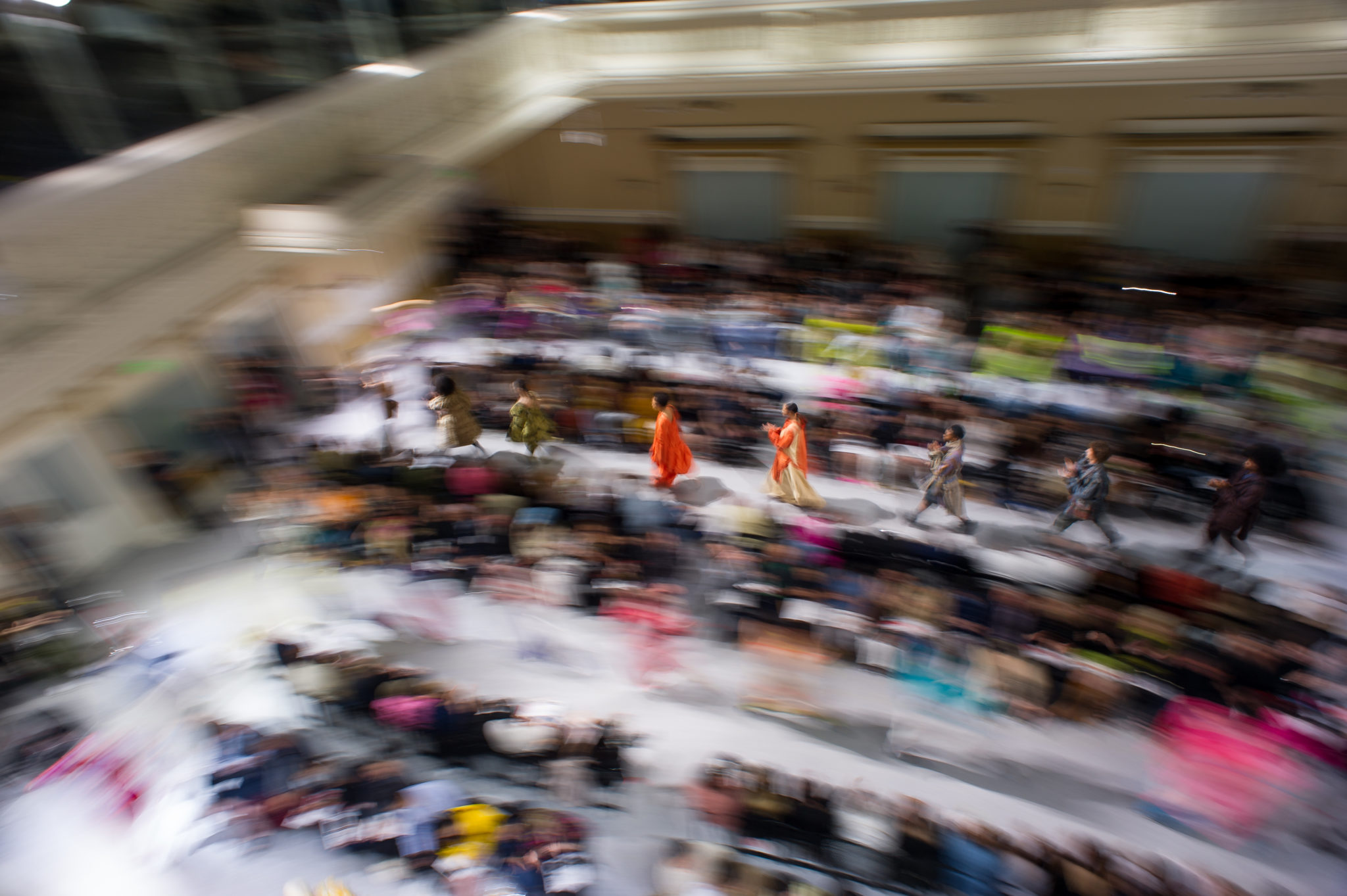The Academy of Art University’s main Fashion building was once a concert venue for the likes of Janis Joplin and the Grateful Dead, a shooting location for the iconic movie Dirty Harry, and more recently, the location of the annual Graduation Fashion Show and Awards Ceremony. The 2019 senior designers wowed the audience with their innovative and creative collections; these are the trends that stood out this year:
Not Your Usual Fabrics
Many of the designers decided to forgo traditional fabric and make their collections from unconventional materials. Xuan Wang, whose collection was inspired by military aircrafts, folded Tyvek paper using origami techniques to create her garments, making each piece a literal paper plane. Christopher Cabalona sent a line of impeccably tailored menswear suits down the runway, each with metal hardware details including items such as turn locks, purse closures, and clasps. Isaiah P. Garcia used materials he constructed himself by inserting dyed hair gel between plastic sheets.
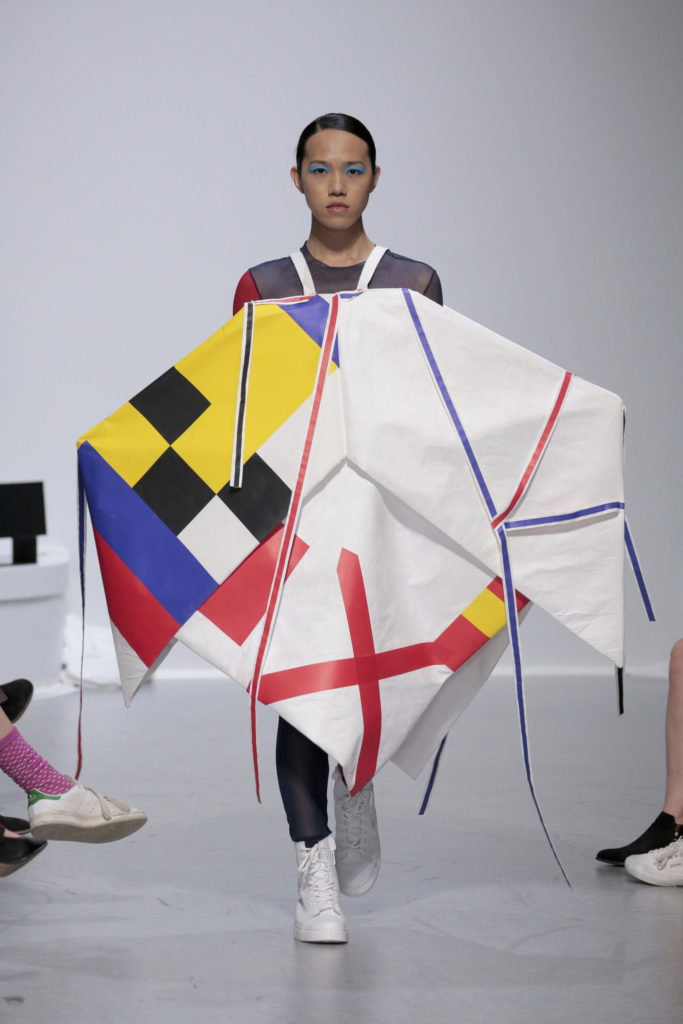
Xuan Wang 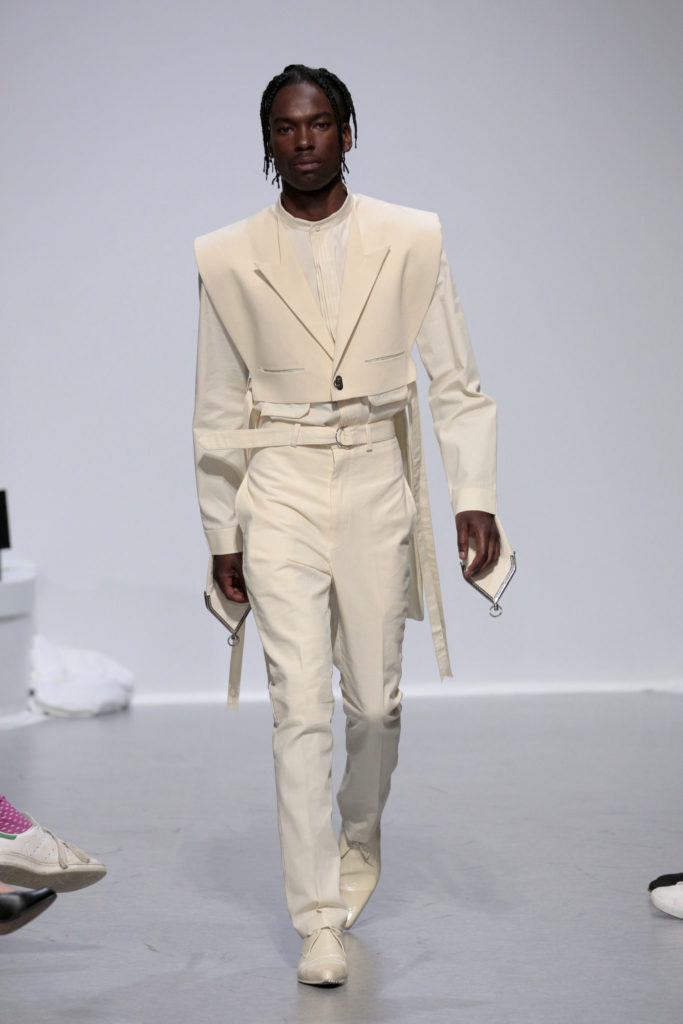
Christopher Cabalona 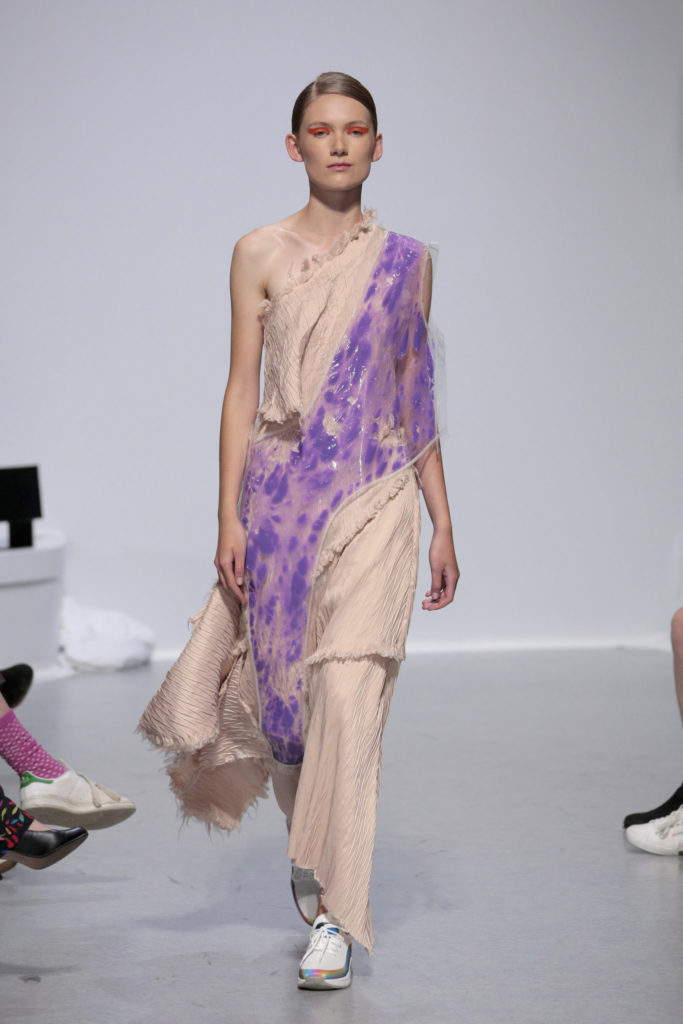
Isaiah P. Garcia
Shapeshifter
Traditional and expected is out, and unusual, exaggerated silhouettes are in. From Maya Gunnell’s voluminous and asymmetrical sleeves to the boxy, oversized shapes of Chiqiao Wang’s Mickey Mouse-inspired garments and the billowing shapes that made up Omotoyosi Olajoku’s laid-back chic collection. Hanan Sabir Argaw used sculptural applique of felt circles, arranged in intricate patterns on the surface of each garment, to give each one its own unique and unexpected silhouette.
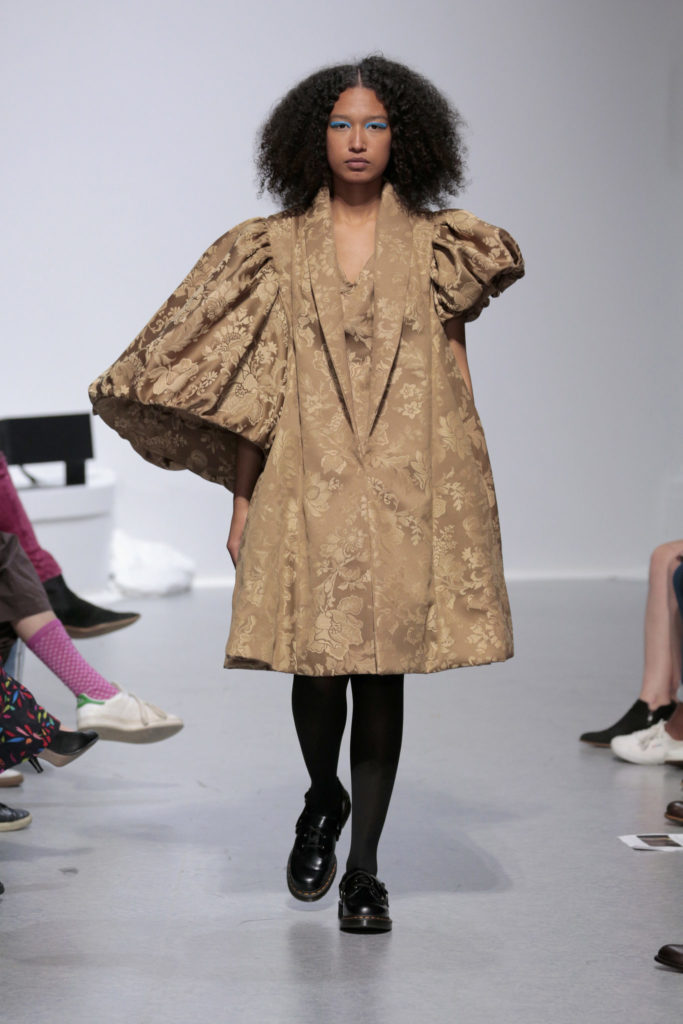
Maya Gunnell 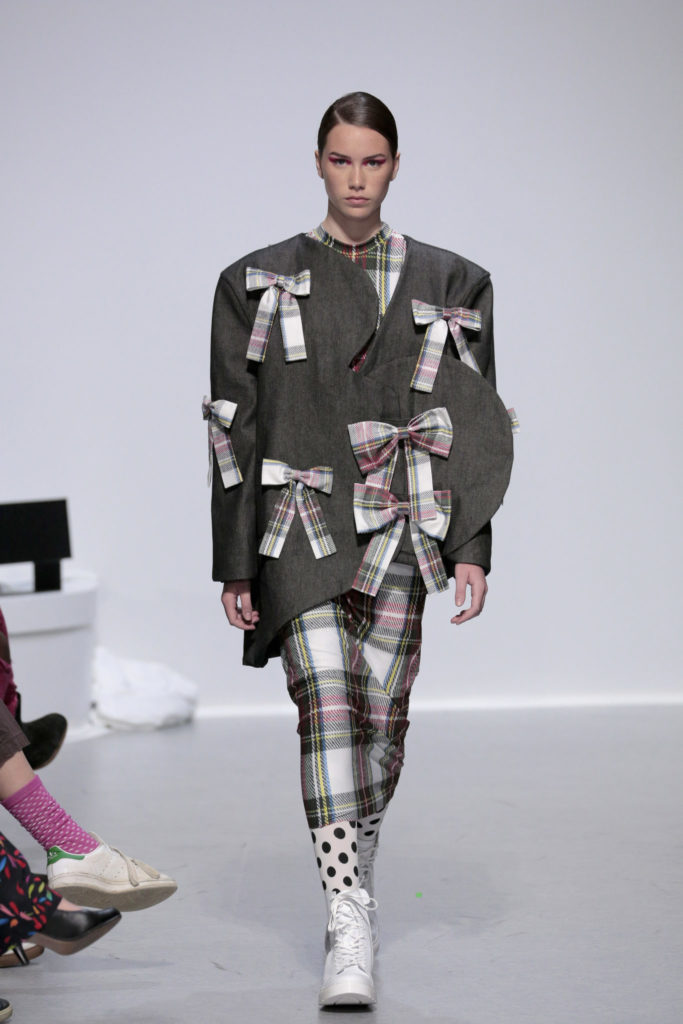
Chuqiao Wang
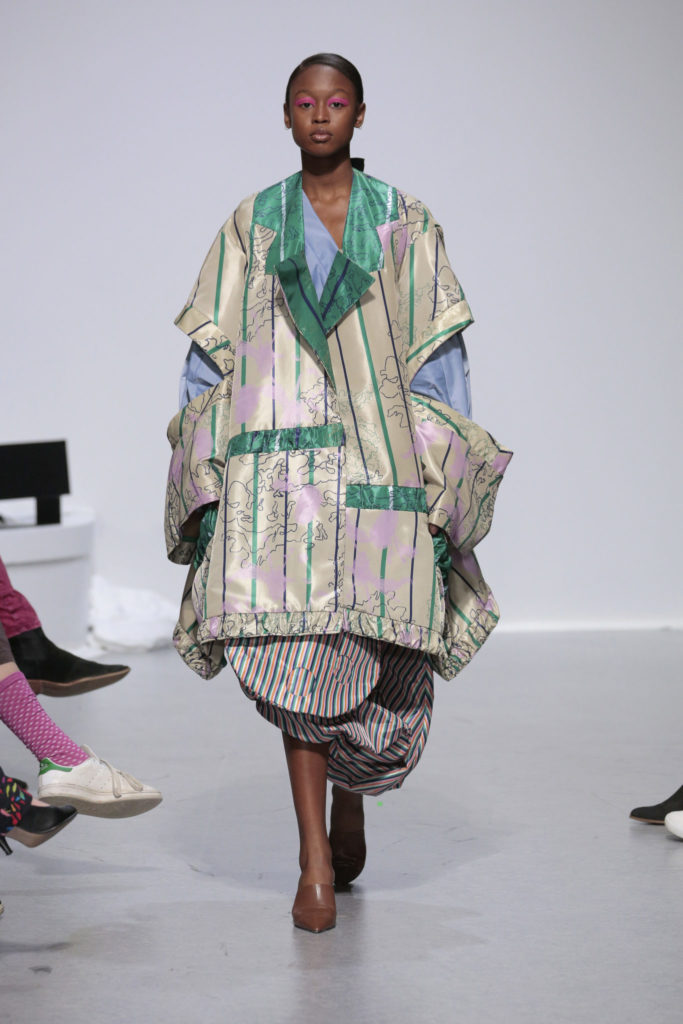
Omotoyosi Olajoku 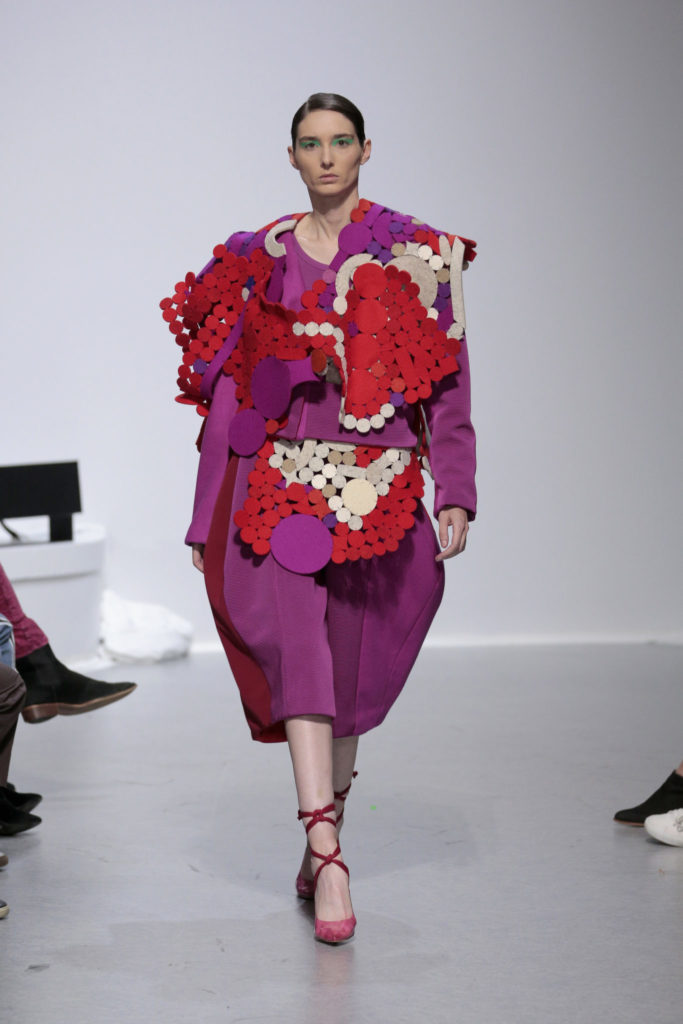
Hanan Sabir Argaw
Unusual Construction
The collaboration between B.F.A. fashion design student Xiangyi Zhou and B.A architecture student Lamiae Ameziane culminated in an array of hybrid garments embellished with sculptural structures; half fashion, half architecture, a successful meeting point between the two seemingly unrelated fields. Anna Yepes Tucker utilized the Japanese dyeing and tying technique called Shibori, which resulted in various circular shapes protruding from the surface of each garment, creating an interesting three-dimensional texture.
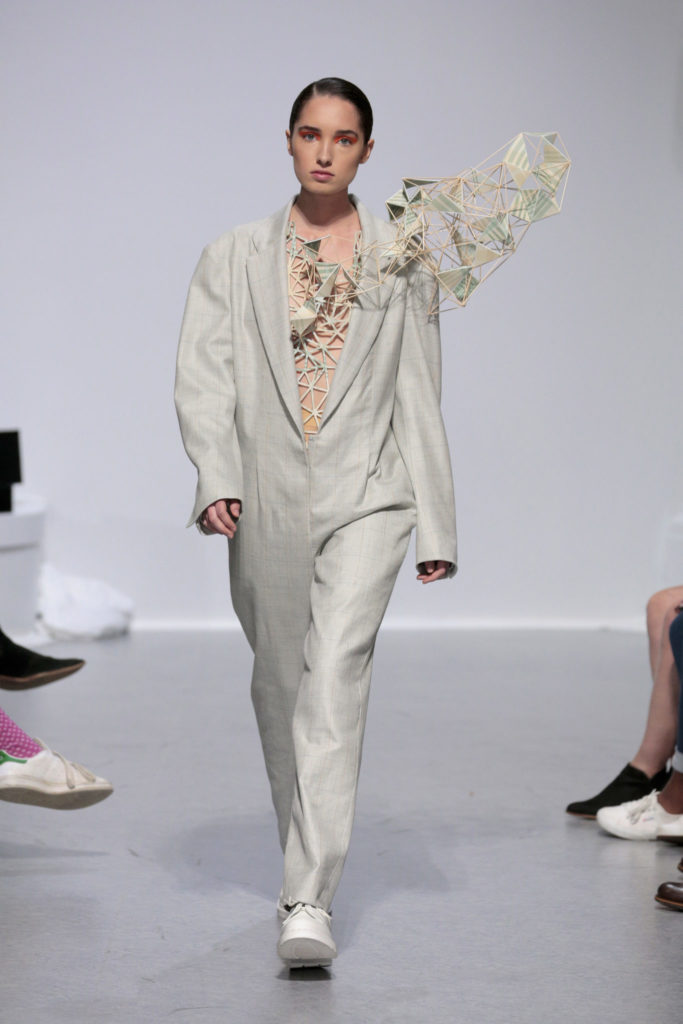
Xiangyi Zhou and Lamiae Ameziane 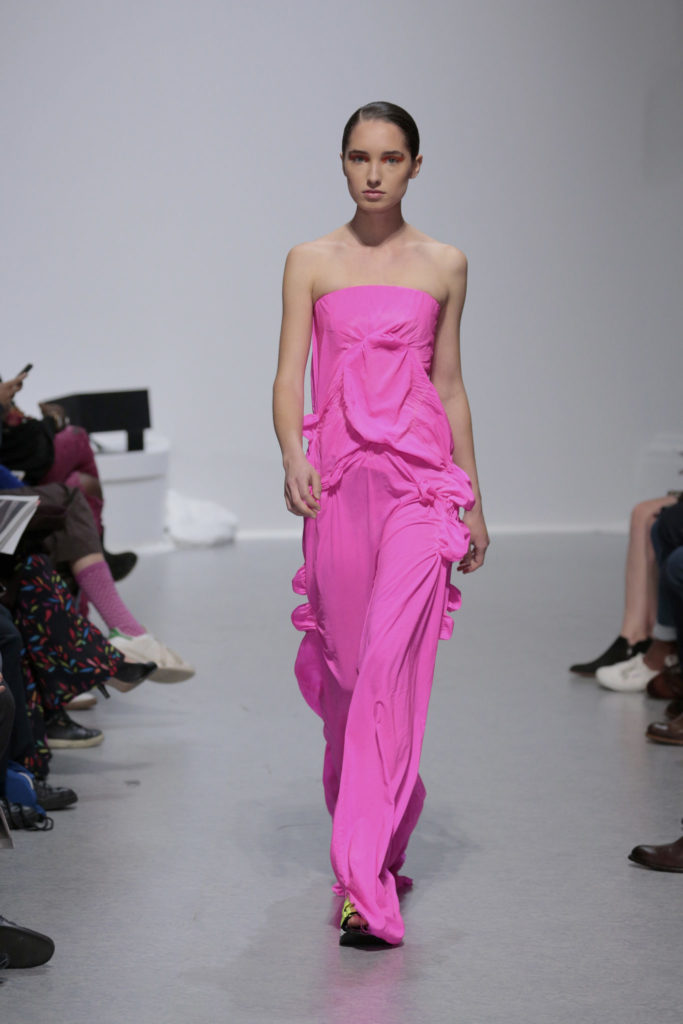
Anna Yepes Tucker
Dramatic Elegance
From the rhinestones, fringe, and glitter of T Camarillo’s drag-inspired collection to the tulle and organza overload of Anan Yinan Zhou’s wedding-dress inspired showcase, there was no shortage of drama and glam at this year’s show. Zhou’s garments were so voluminous and fabric-heavy, that they brushed the tips of the audiences toes, and Camarillo’s pink jumpsuit featured jeweled tassels that sashayed as the models walked.
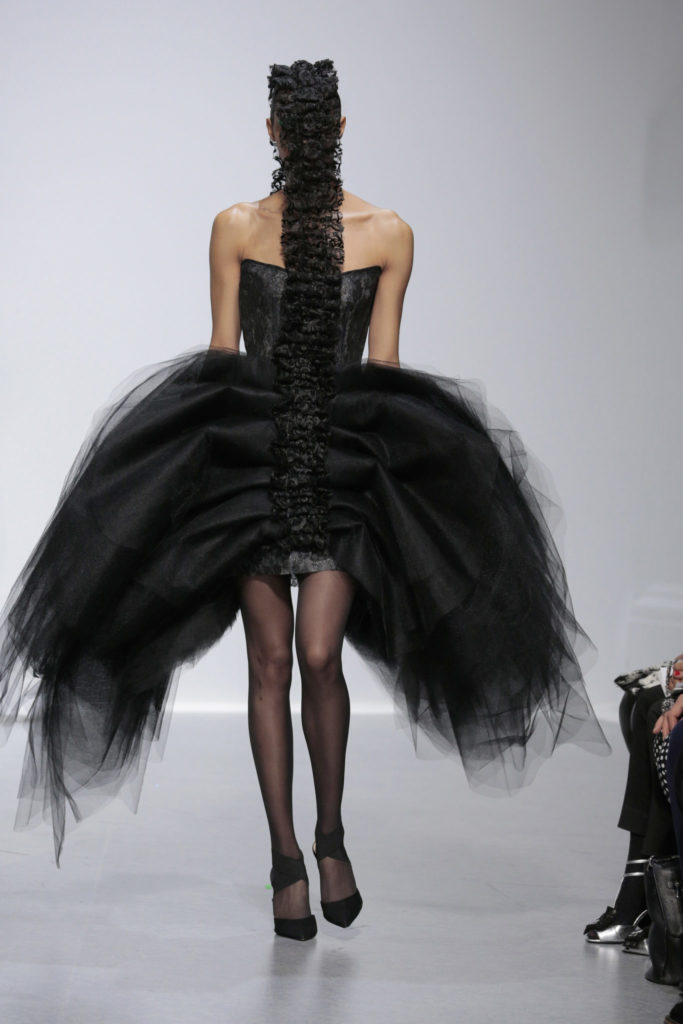
Anan Yinan Zhou’ 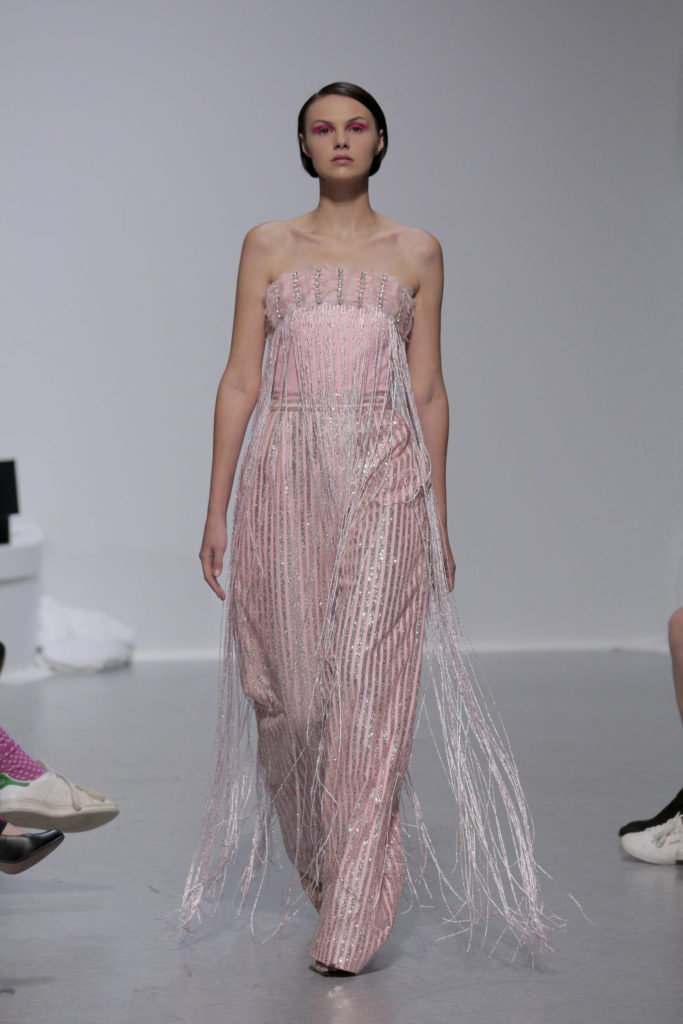
T Camarillo
Your True colors
Knitwear designer Beam Ratchapol Ngaongam wowed the audience with his brightly colored garments; vivid pinks, various shades of blue, shocking yellows and pastel oranges served to highlight the different types of stitches, seams and other knitwear techniques he incorporated into his work. Clara M. Chandra and Jack Gunnin’s collaboration was an explosion of neon yellows, greens and blues that made the structured, accented sleeves and the floral prints ‘pop’. And Aya Chang’s childrenswear collection was a fun mix of bright pinks, blues, and oranges, embellished with cartoon images reminiscent of children’s drawings, like cherry cupcakes, cartoon foxes and quilted pineapples.
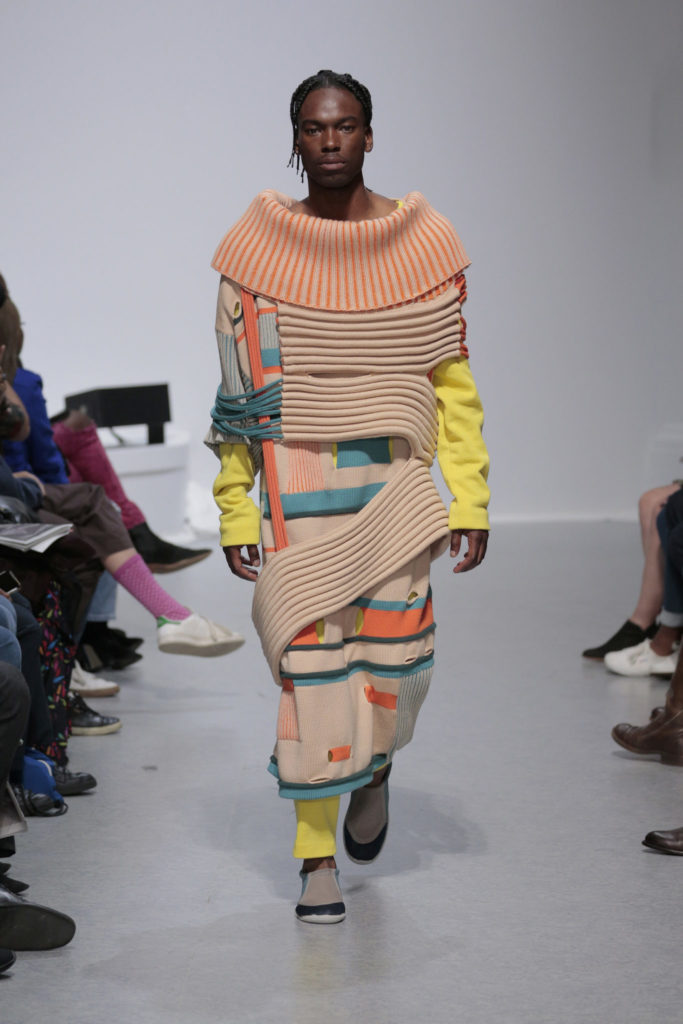
Beam Ratchapol Ngaongam 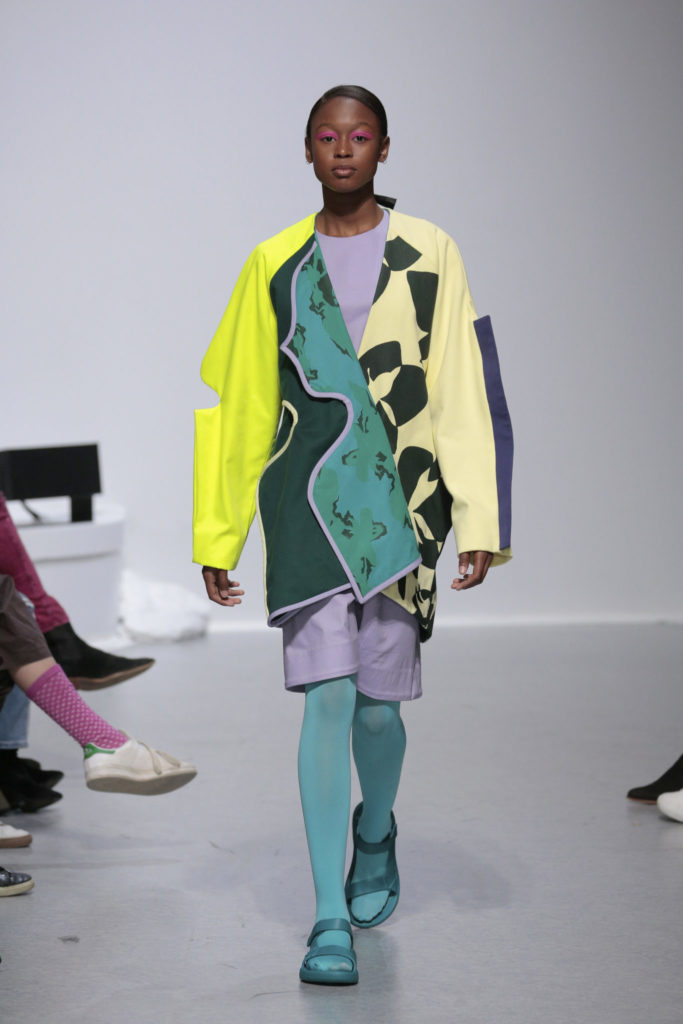
Clara M. Chandra and Jack Gunnin 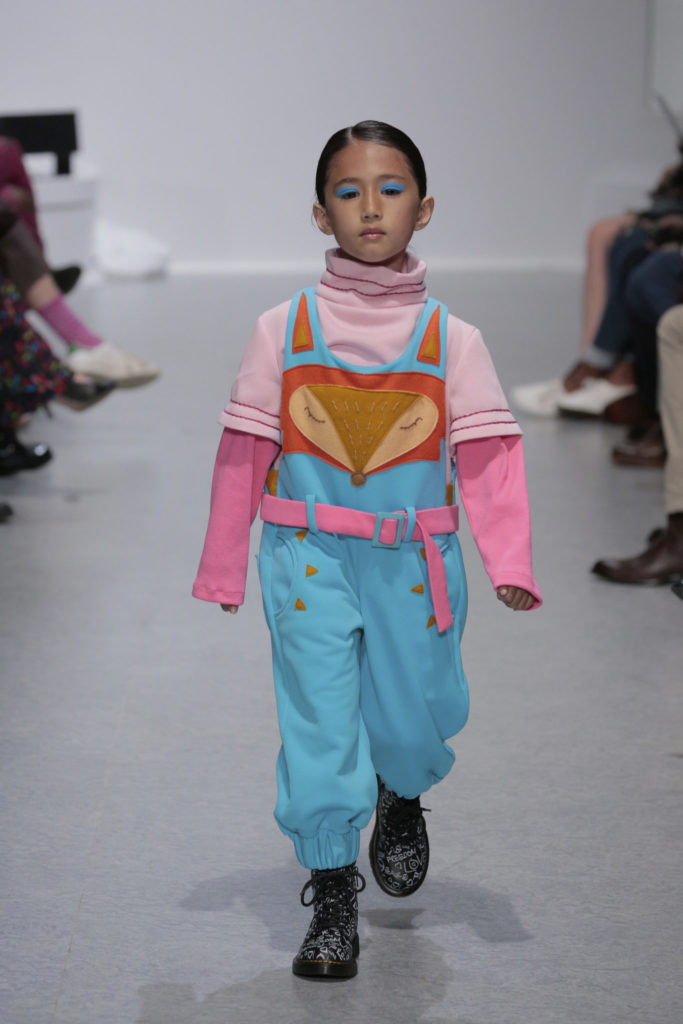
Aya Chang
Start a Revolution
Many of the designers used their collections to take a stand for or against an issue they care deeply about. Supawish Boonsprasart’s collection, comprised of garments embellished with flowers and matching head coverings, was his way of protesting against the commercialization of a piece of natural land in his home country of Bangkok, as well as questioning workers’ safety standards in developing countries. The vibrant orange and blue prints of Pamela Toribio and Claudia Tan’s collection were used to question the ethics of Hong Kong’s Goldfish Street, a live animal market where genetically modified goldfish are sold in plastic bags. Ana Karen Juarez Ibarra presented a line of garments made from large-scale petals, inspired by Frida Kahlo, to signify female empowerment.
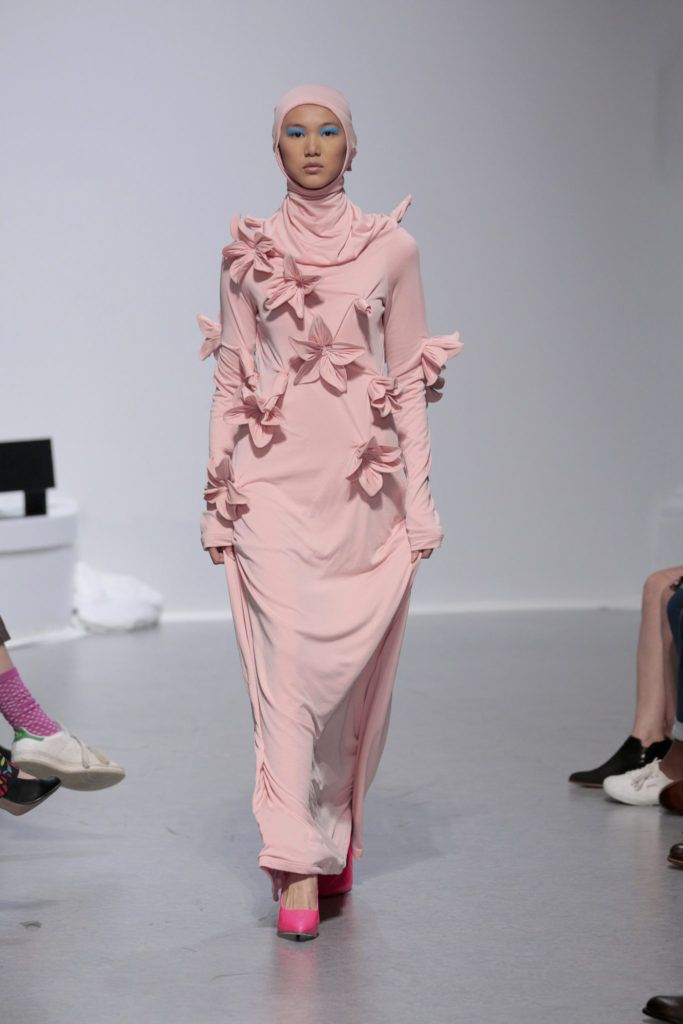
Supawish Boonsprasart 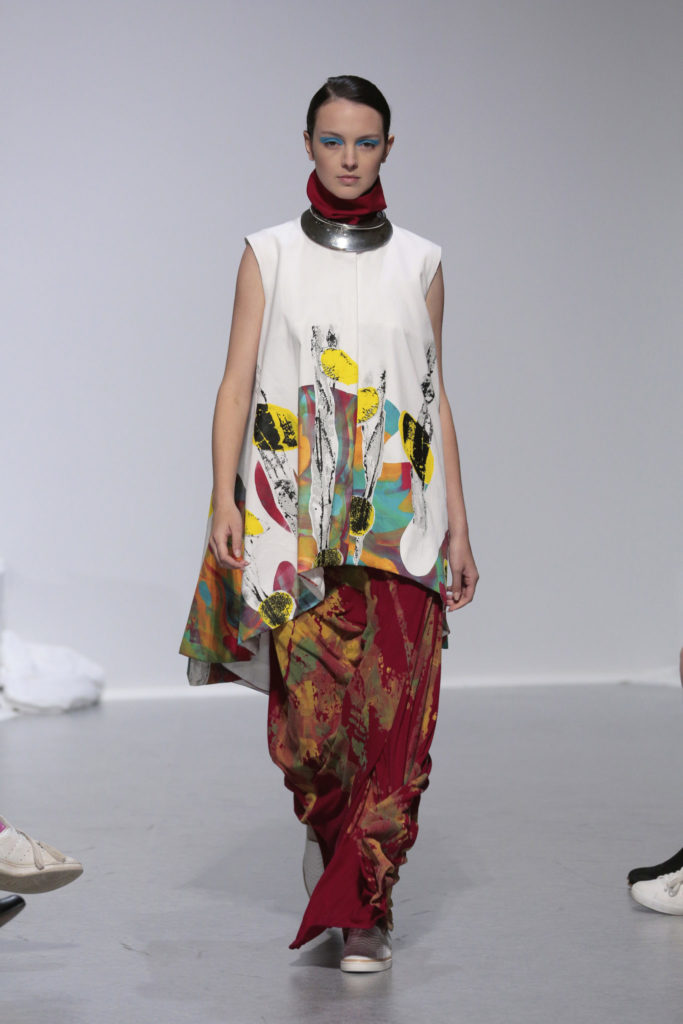
Pamela Toribio and Claudia Tan 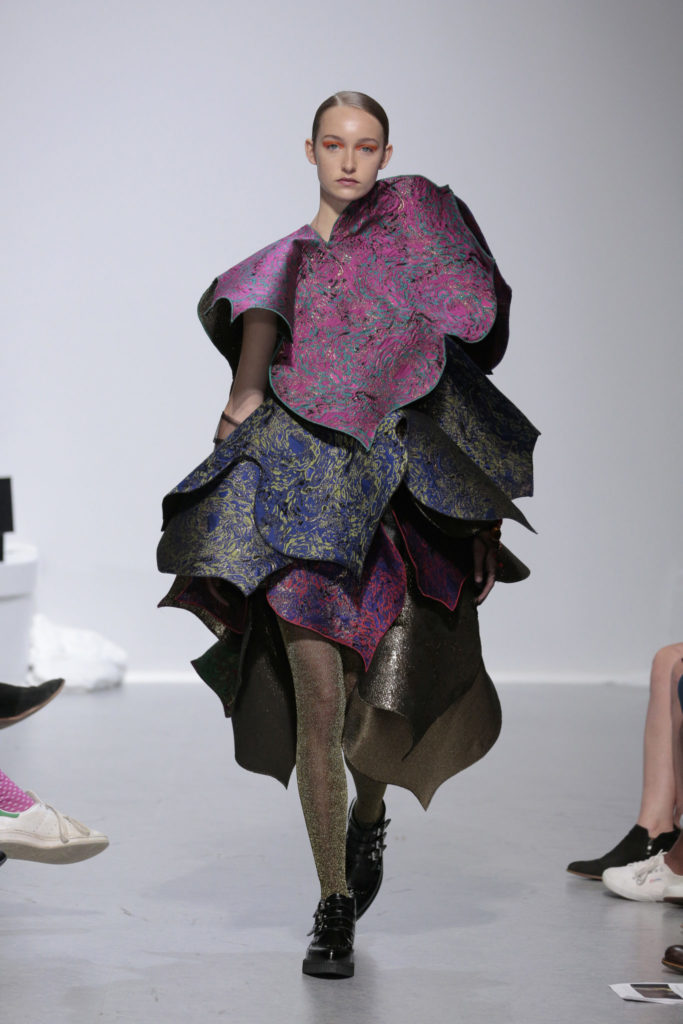
Ana Karen Juarez Ibarra
From the Textile Lab
For some collections, the textiles stole the show. Jing Zhao took textile design classes just so she would be able to create her own fabric for the show, producing what resembled spilled coffee patterns for her edgy, deconstructed collection. The choice of textiles for Xinyue Zhang’s menswear collection was interesting; her oversized men’s coats and jackets were made from fabric imprinted with butterflies, reinforcing her belief that fashion shouldn’t be segregated by gender.
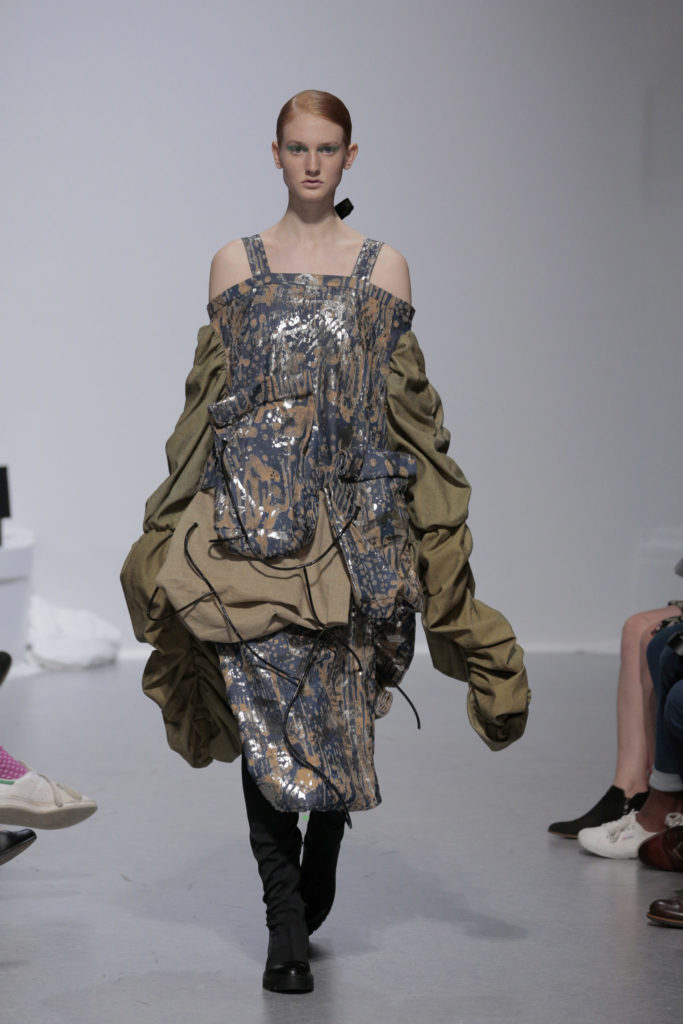
Jing Zhao 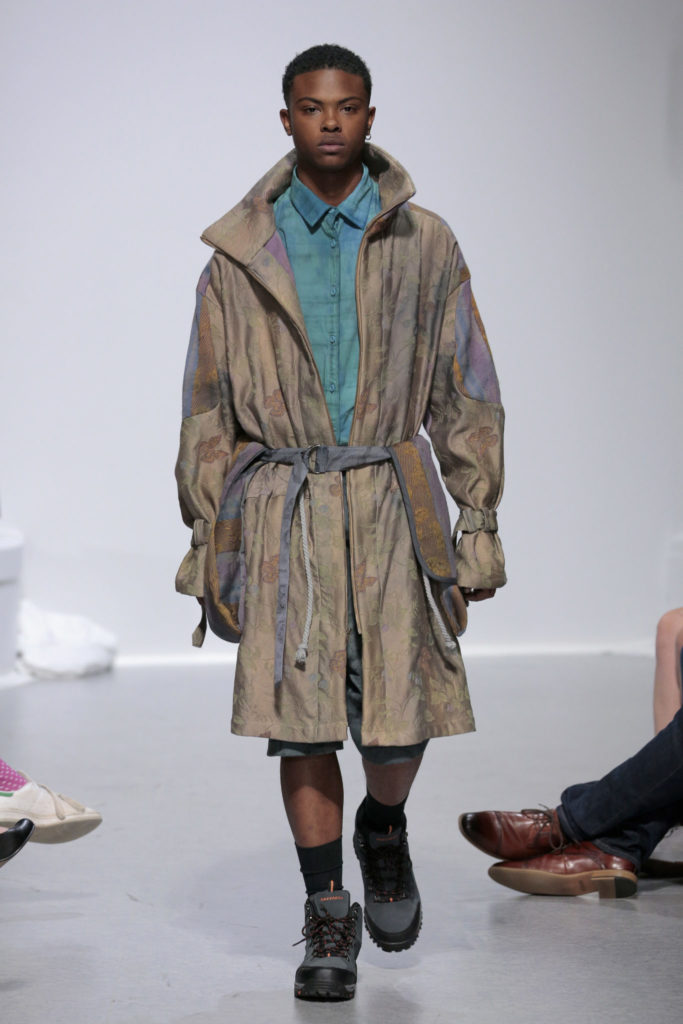
Xinyue Zhang
Tribute to Heritage
Many of the designers used their collections to pay homage to their homelands. So Hyan An combined the traditional dressings of Papua New Guinea with the traditional Korean hanbok dress, creating a collection that is as surprising and unique as her hybrid heritage. Camila Pinzón used fabrics with playful prints and ruffled skirts to showcase the cheerful spirit and playfulness of Colombia.
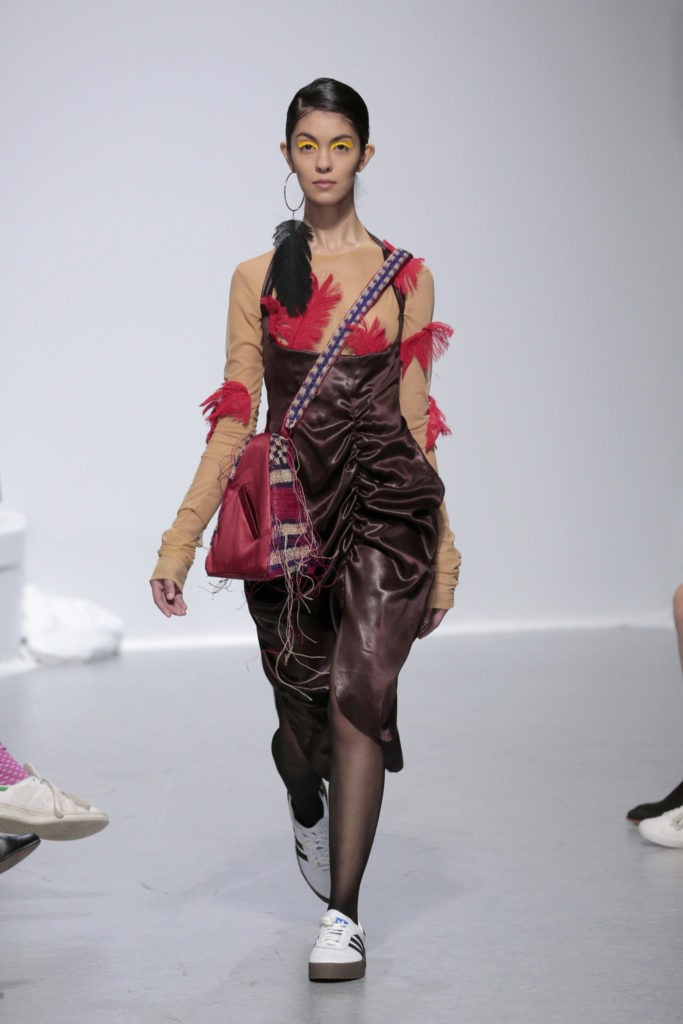
So Hyan An 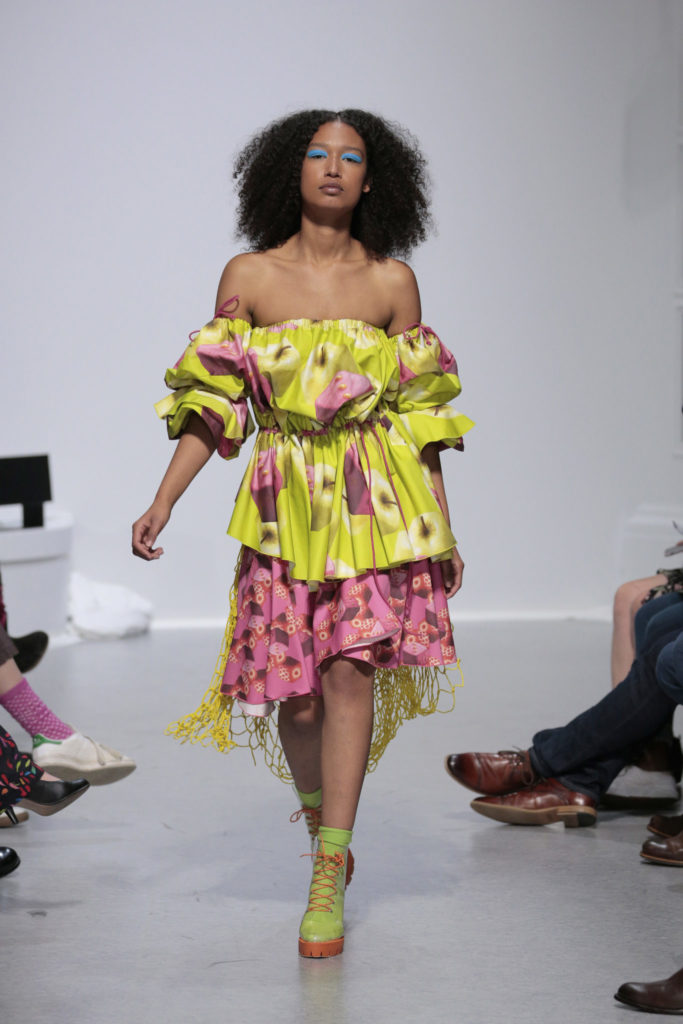
Camila Pinzón
Sophisticated Texture
While Jira Jiu’s asymmetrical streetwear collection is made entirely of denim, one cannot tell from afar. She manipulated the fabric by cutting, distressing, sewing and weaving, to produce different textures, and a bird motif is threaded through the collection. Kelly Joohui Kim’s broke knitwear norms by incorporating linen, mohair, and elastic cords into her garments, creating a variety of different textures. Inspired by her father’s sailing habit, the different textures in her collection resemble nautical elements, like naval ropes and fresh seaweed caught in a dirty net.
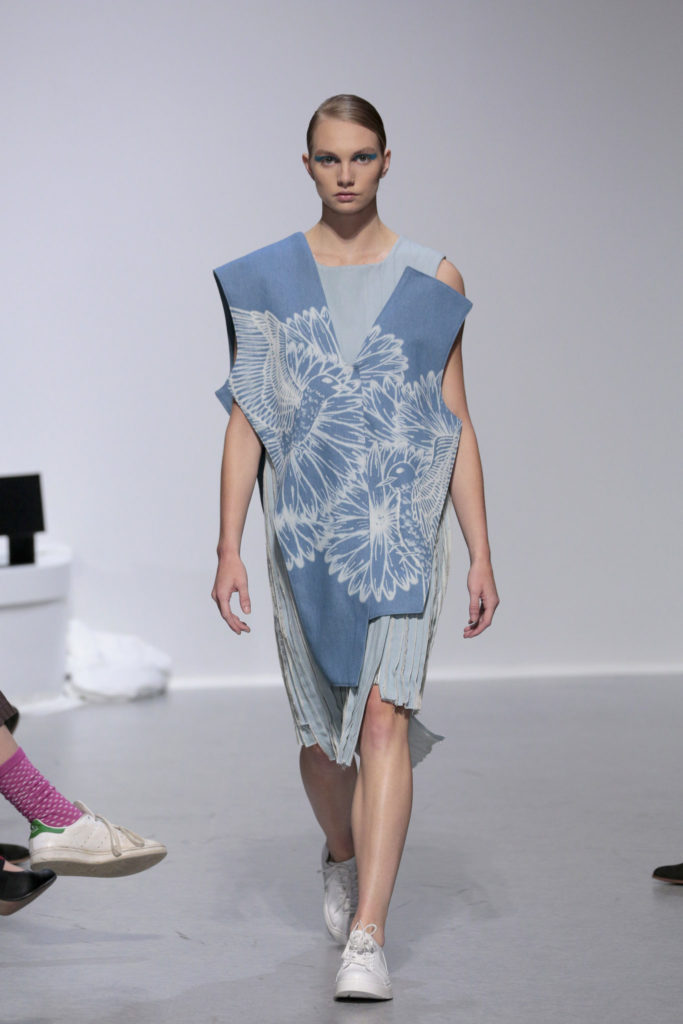
Jira Jiu 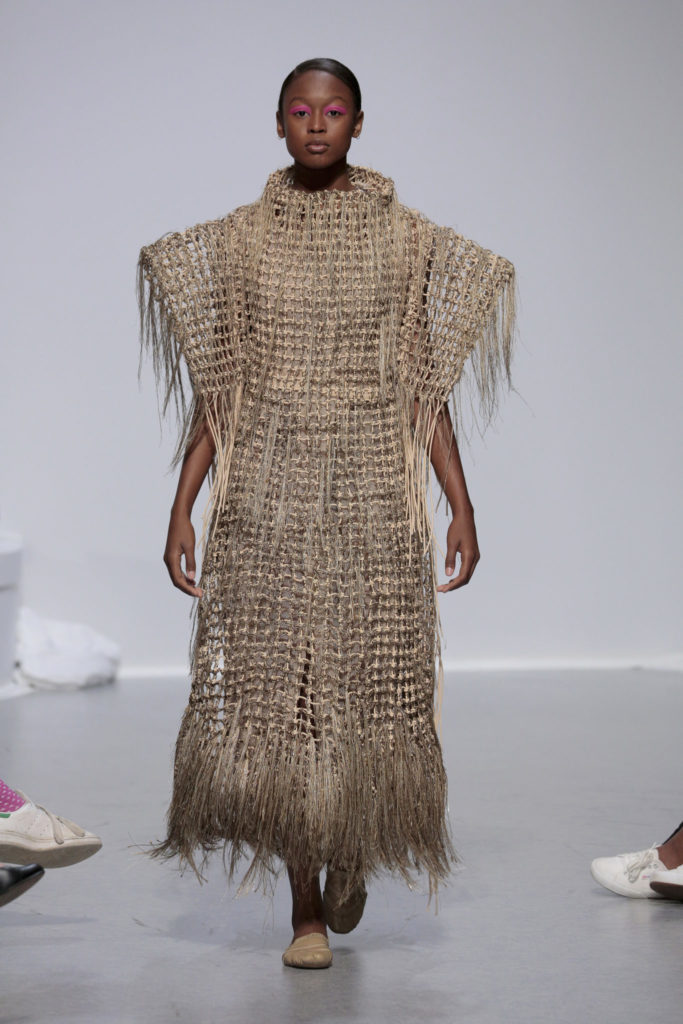
Kelly Joohui Kim
Mille-feuille
Yifan Xu’s garments were created from strips of floral fabric that were curled and pasted onto the body, creating an optical illusion effect as the model walked. Ziyi Ye intricately layered fabric to produce elegant dresses in shades of pink and red that resembled the Azalea flower, upon which her collection was based. Chuer Dorothy Yu arranged her fabric in spiraling shapes to resemble pencil shavings, lining the edges of her garments with cork and foil to enhance the effect.
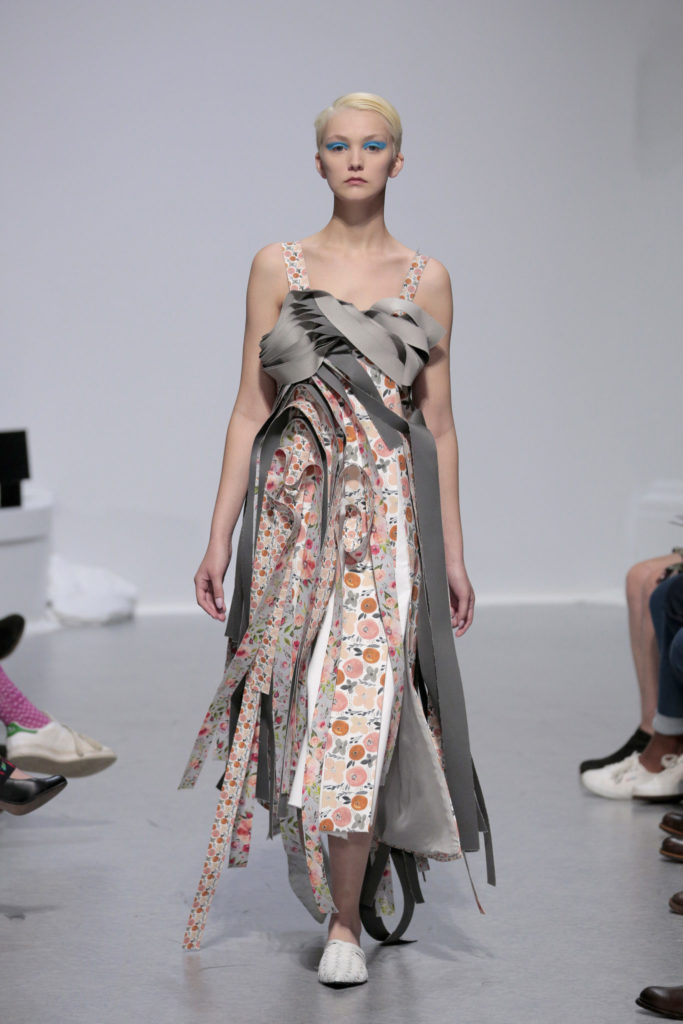
Yifan Xu 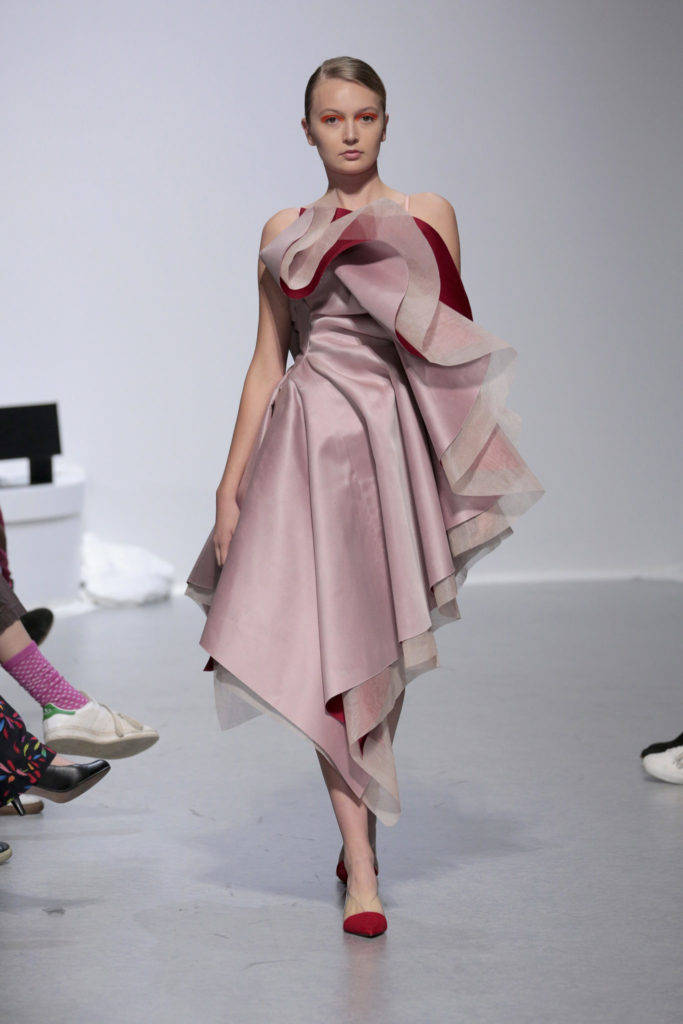
Ziyi Ye 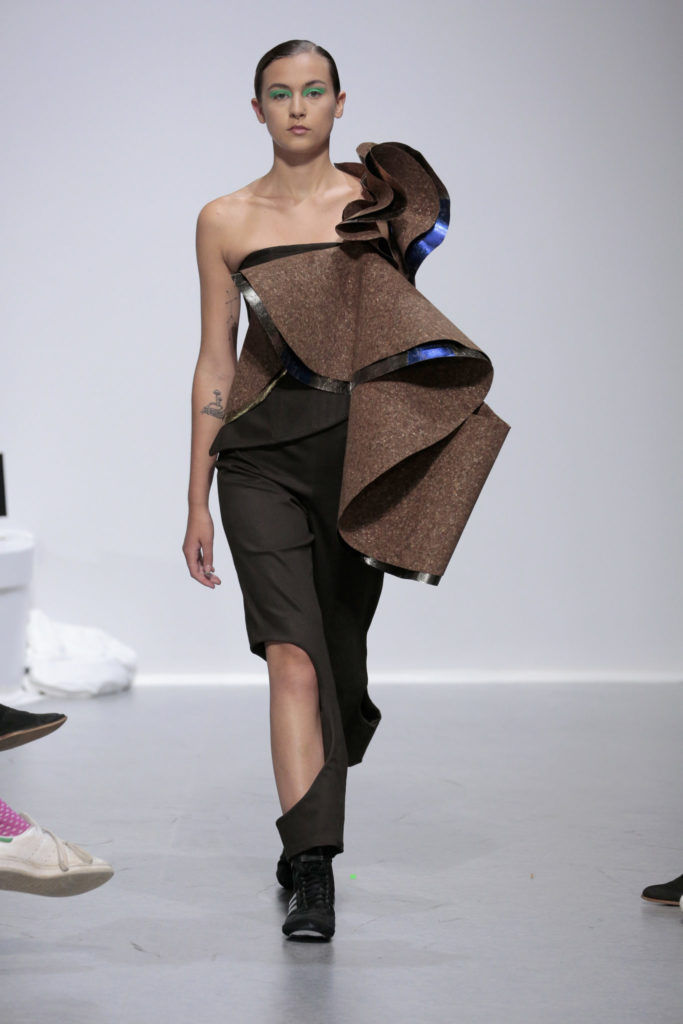
Chuer Dorothy Yu
Art Congruence
For some collections, designers drew inspiration from artists. Florence Canonoy admires the work of Varvara Stepanova, a Russian Constructivist artist who designed utilitarian uniforms. Canonoy’s own collection of deconstructed uniforms, incorporating the same versatile, convertible elements, exhibited pieces that can be adapted and worn in different ways. Anrong Huang’s avant-garde menswear collection, which was inspired by Leonardo Da Vinci’s drawing of the Vitruvian man, similarly consists of multi-use garments that can be adapted and worn in a multitude of ways, transformed into a completely different garment simply by folding or pulling a zipper. And in Linh La’s collection, the pieces aspired to emulate the textured, spiraling effect of artist Judith Scott, borrowing from her weaving techniques to creates textured, sculpted looks.
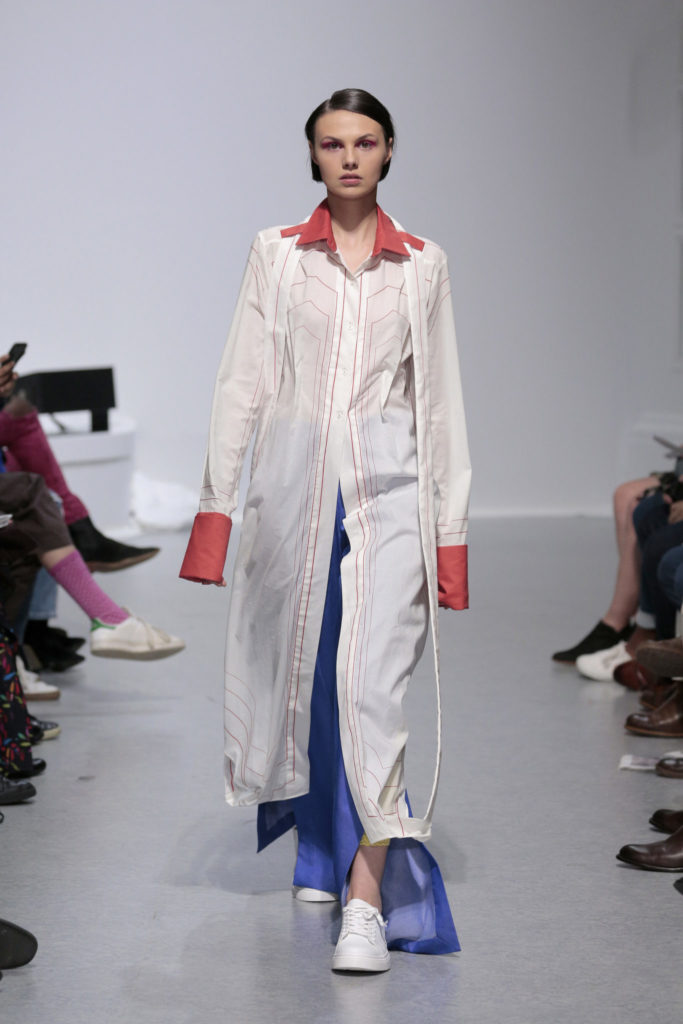
Florence Cananoy 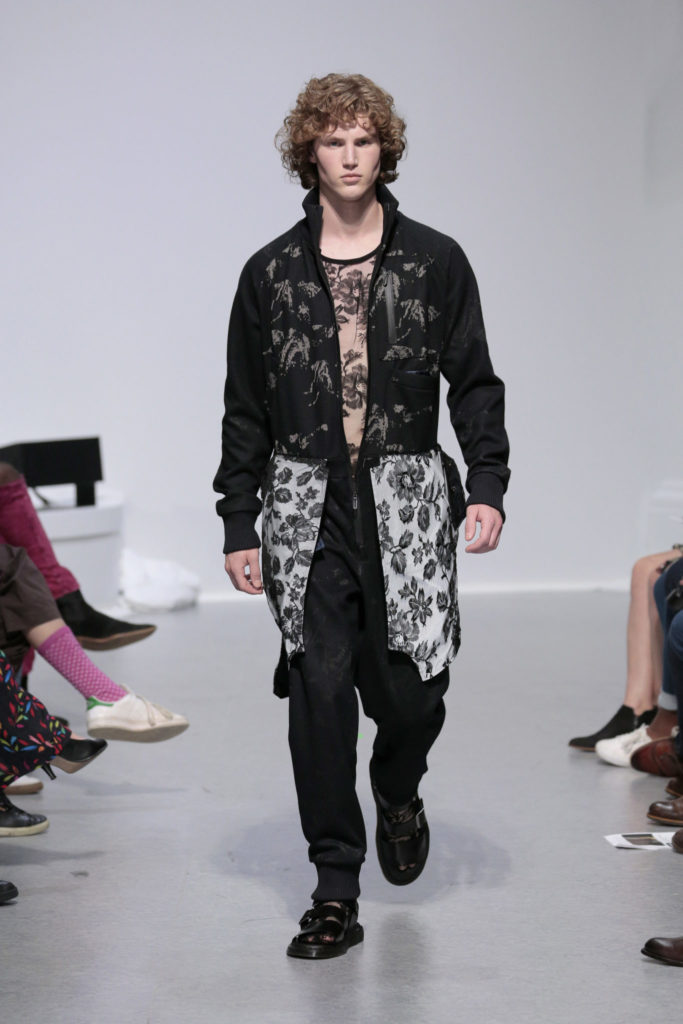
Anrong Huang 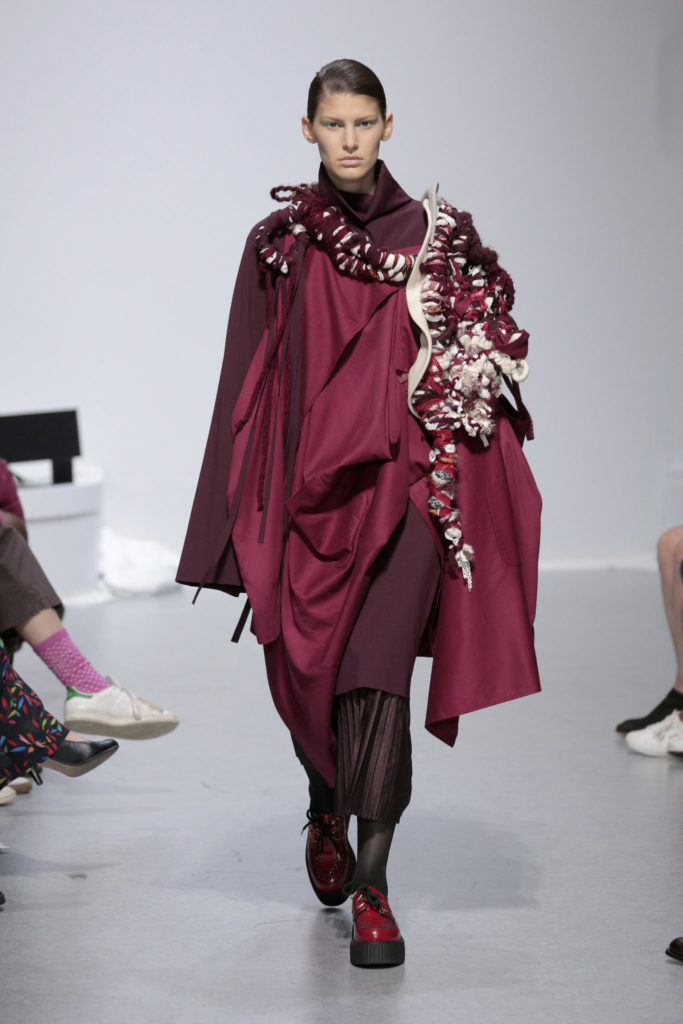
Linh La
From touching tributes to their homelands to avant-garde showstoppers, the collections that graced the runway were a testament to the work ethic and creative spirit of the 2019 graduating students. As the uniqueness of each debut collection suggests, these designers will be ones to watch.
Words by Adriana Georgiades, MA Fashion Journalism
Watch the video of Graduation Fashion Show 2019: https://www.academyart.edu/academics/fashion/fashion-shows/

